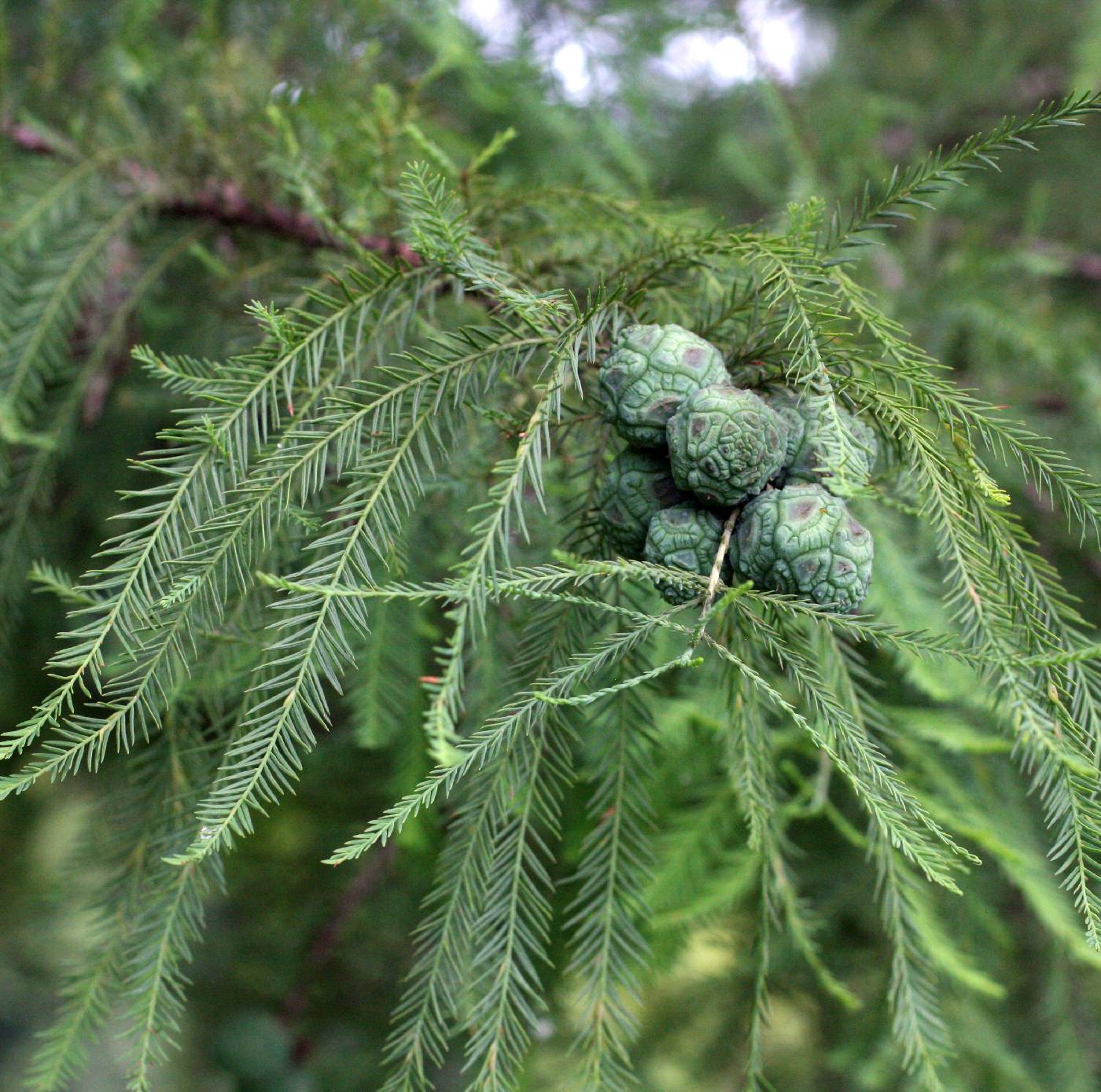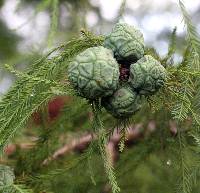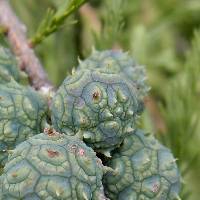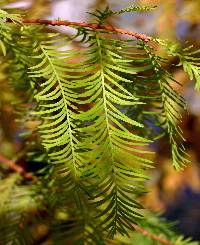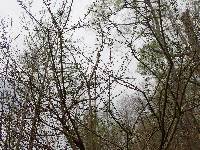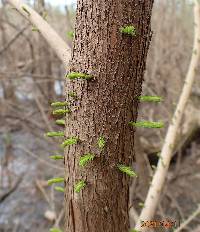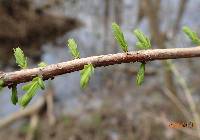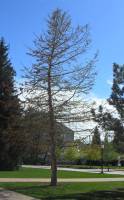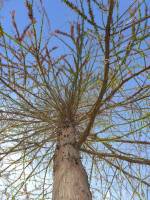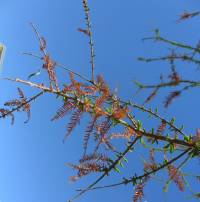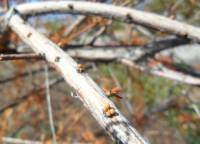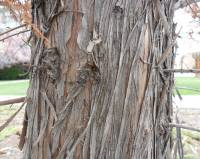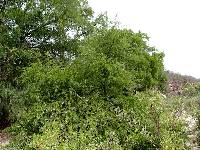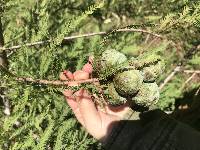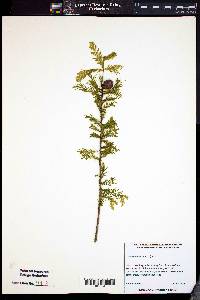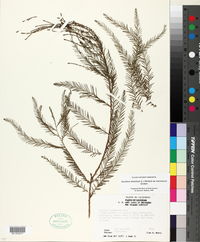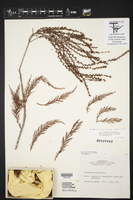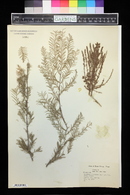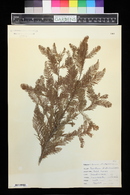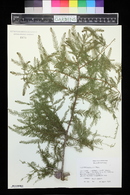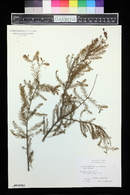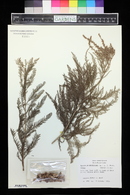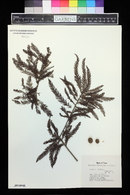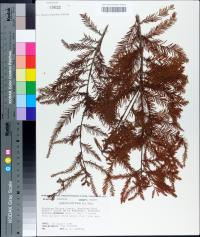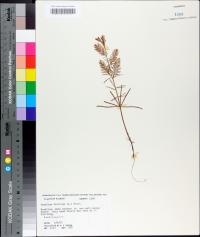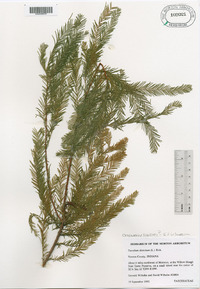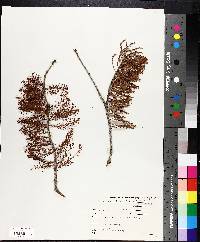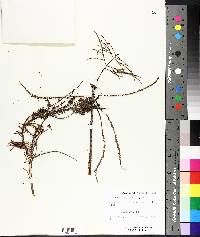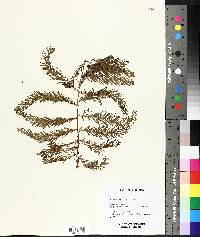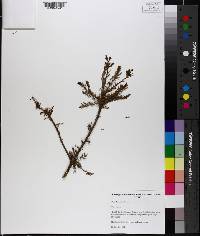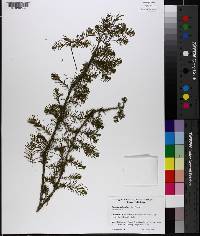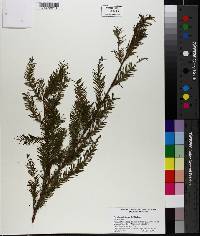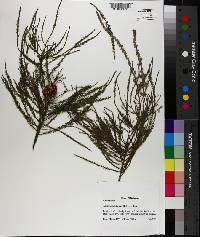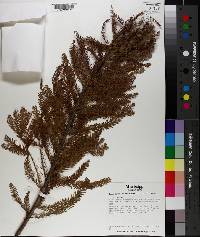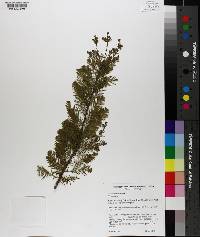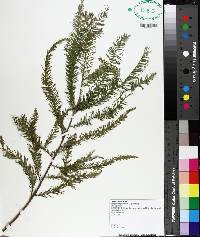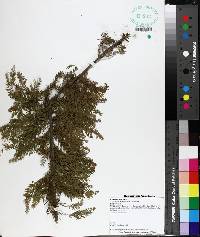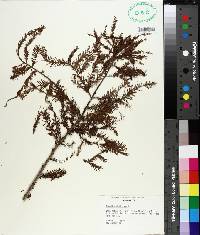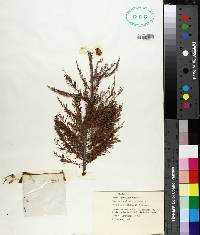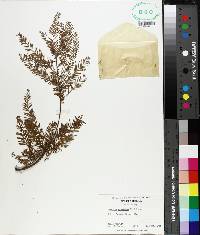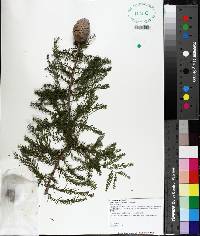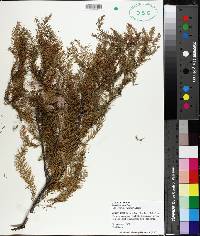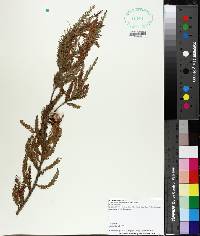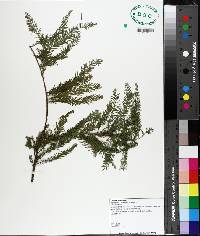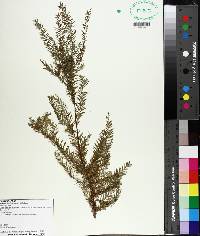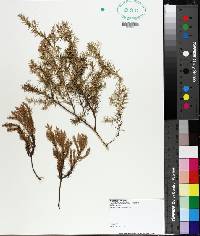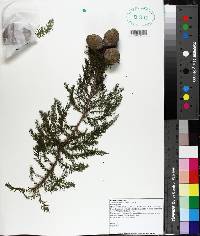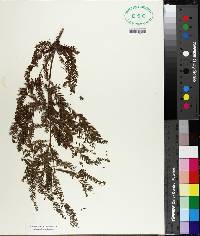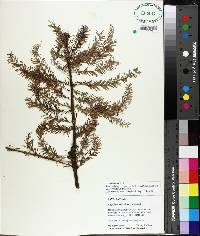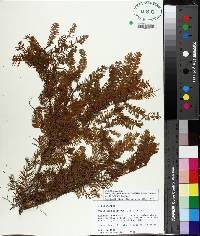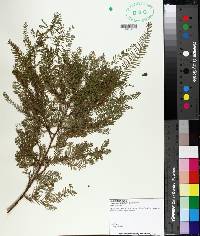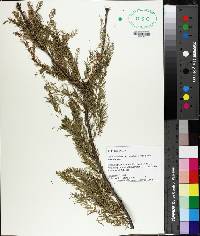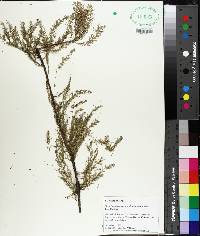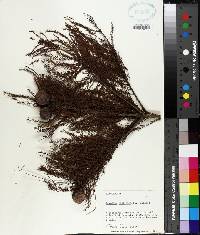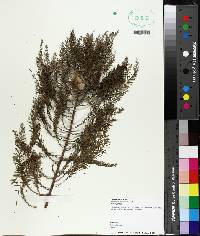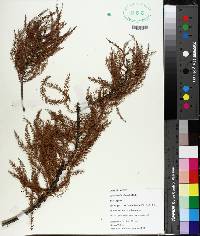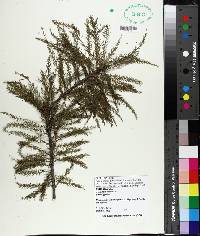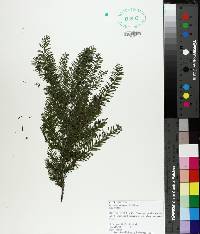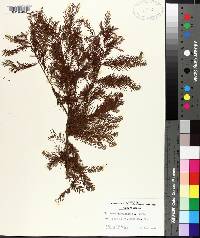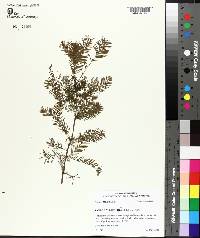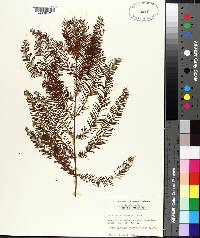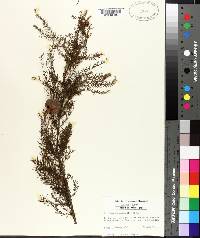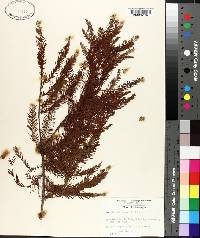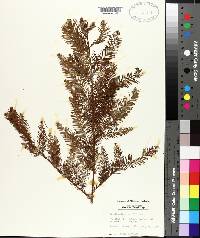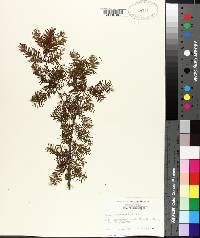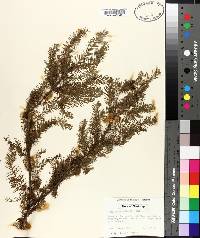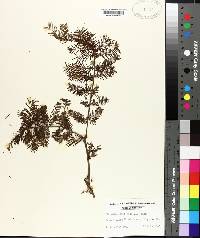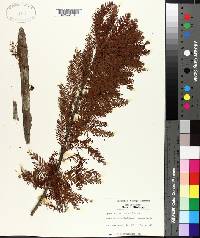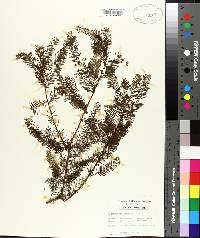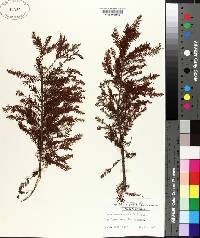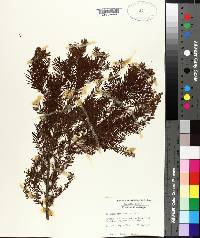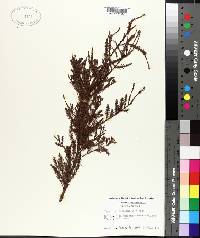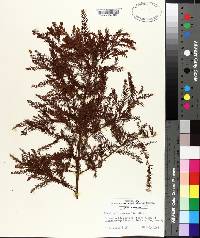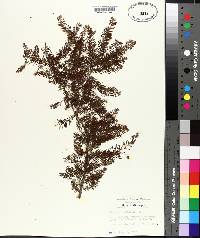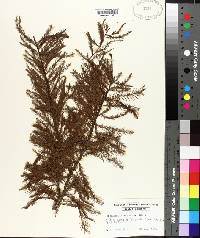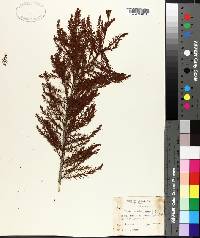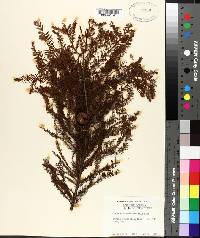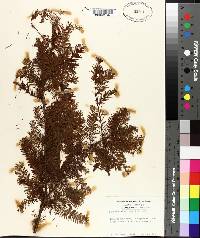
|
|
|
|
Family: Cupressaceae
Bald-cypress, more...Southern Bald-Cypress, bald cypress
[Cupressus disticha L.] |
Trees seasonally cladoptosic; trunk enlarged basally and often conspicuously buttressed; crown monopodial and conic when young, often becoming irregularly flattopped or deliquescent (branched and so divided that the main axis cannot be determined) with age. Shoot system conspicuously dimorphic, long shoots indeterminate, bearing individually abscising, linear to lanceolate leaves, short shoots determinate, abscising in autumn with their leaves, variable, intergrading, at one extreme pendent to horizontally spreading, bearing decurrent, narrowly linear and laterally divergent leaves in 2 rows, at other extreme strictly ascending to occasionally pendent, bearing short-lanceolate to deltate and tightly appressed leaves. Pollen cones in pendent panicles to ca. 25 cm, 2--3 mm, conspicuous in winter prior to pollination. Seed cones 1.5--4 cm. The two varieties recognized in the flora are indistinguishable in reproductive characteristics and continuously intergrading in morphologic and phenologic characteristics, although pure populations of the extremes appear morphologically and ecologically distinct. Unlike the varieties in the flora, var. mexicanum is annually cladoptosic, with determinate short shoots abscising concomitantly with expansion of shoots of the following year. Specimens from juvenile individuals, stump sprouts, fertile branchlets, terminal vegetative branchlets, or late-season growth may not be determinable to variety. Taxodium distichum (bald-cypress) is the state tree of Louisiana.
Tree to 50 m tall, trunk to 4 m in diameter Leaves: of determinate shoots alternate, arranged in two rows on a flattened plane, yellowish green, 0.5 - 1.7 cm long, linear with a pointed tip, feather-like, soft, flexible, each leaf extending down the stem (decurrent). Fall color is orange. Bark: dark reddish brown to light brown, shallowly furrowed, becoming flaky and fibrous. Twigs: slender and reddish brown. Buds: light brown, 0.3 cm wide, spherical. Form: conical when young, usually becoming open and more flat-topped with age, with the trunk enlarged near the base (buttressed) and lateral branchlets hanging downward. Roots: with erect, conical to rounded "knees" when growing in periodically flooded areas. Pollen cones: usually hanging downward in loose, branched inflorescences (panicles) to 10 cm long, purplish, forming in fall and developing in spring. Seed cones: near ends of twigs, green to purple, becoming brown, 1.5 - 4 cm wide, almost spherical, maturing and shattering in a single season. The thin, woody, four-angled scales reach 1.2 cm long and produce one to two three-angled seeds. Pollination occurs in spring. Shoots: dimorphic. Long indeterminate shoots have individual linear to lanceolate leaves that fall off singly. Short determinate shoots hang downward or horizontally from indeterminate shoots and fall in autumn with the attached leaves (cladoptosic). Similar species: Taxodium distichum is distinct in the Chicago Region because it has deciduous short stems with feathery needle-like leaves and nearly spherical cones that shatter into four-angled scales. It also forms "knees" when growing in periodically flooded areas. Habitat and ecology: Only one specimen is known to exist in the Chicago Region, although it may have been planted. It is on a small island at the Willow Slough State Game Preserve in Newton County, Indiana. Elsewhere, this species is seen in swampy, low wet woods or along river banks and floodplain lakes. Occurence in the Chicago region: non-native Notes: The decay-resistant wood is used for docks, boats, barrels, fence posts, railroad ties, and bridges. Etymology: Taxodium comes from Taxus, meaning yew, and the Greek word eidos, meaning resemblance, referring to the similar leaf shapes of the two species. Distichum means "in two ranks," referring to the arrangement of the leaves. Author: The Morton Arboretum Tree to 40 m, the trunk concavely thickened below and conspicuously buttressed at least in mature trees; bark reddish to light brown, with shallow furrows, becoming flaky; leafy branchlets mostly spreading horizontally; lvs narrowly linear, 5-15 mm, divergent, appearing 2-ranked on the branchlets, the free portion of the lf basally contracted and twisted; panicles ca 1 dm, initiated in the autumn, developing in the spring; cones pendulous at the ends of the twigs, 2-3 cm thick, with dull, rugose scales; 2n=22. Brownwater riverine and lacustrine margins and swamps, occasionally in brackish water, chiefly on the coastal plain; Del. (and locally and perhaps only recently n. to L.I.) to Fla. and Tex., n. in the Mississippi Valley to s. Ind. We have only the widespread var. distichum, as here described. Var. imbricarium (Nutt.) Croom (T. ascendens), the pond-cypress, extends n. only to N.C. Gleason, Henry A. & Cronquist, Arthur J. 1991. Manual of vascular plants of northeastern United States and adjacent Canada. lxxv + 910 pp. ©The New York Botanical Garden. All rights reserved. Used by permission. From Flora of Indiana (1940) by Charles C. Deam The cypress is restricted to five counties in the southwestern part of the state. Collett (Rept. Ind. Geol. Surv. 5: 338. 1874) estimated that 20,000 acres of the southwestern part of Knox County were "covered with a fine forest of cypress." In this whole area there are now only a few straggling specimens left. In Little Cypress Swamp in the extreme southwestern corner of Knox County the species still persists and is reproducing in small numbers. There were a few cypress sloughs in Posey County but the trees have been slaughtered in most of them. There are no objections to judicious cutting but an attempt to annihilate a species without sufficient cause seems a tragedy. I found a few trees along Cypress Creek in Warrick County about 20 years ago but I was not able to find them recently. It has also nearly disappeared in Vanderburgh County. Baird & Taylor reported it from Clark County but I am excluding this report for lack of confirming specimens or convincing proof that it really did exist in this county. There is, however, some evidence to support this report. Audubon is quoted as having taken Rafinesque into extensive canebrakes in Indiana north of Louisville, and Victor Lyon, former surveyor of Clark County, also told me that he had seen large native pecan trees in the Silver Creek bottoms. I have not been able to study this area sufficiently to find other associate species of the cypress, and I leave this report to be confirmed. I have never seen this species growing in Gibson County, but late in 1935 I met Smith White, who was 71 years old and who had always lived in the Gibson County Bottoms, and he told me, in the presence of three other persons, that it had never occurred in that area except for a single tree in a slough in a woods on the farm of C. B. Balse, about 3 miles south of East Mt. Carmel. These other three men had also seen the tree to which he referred. …… Indiana Coefficient of Conservatism: C = 10 Wetland Indicator Status: OBL Deam (1932): The original stand of cypress in Indiana has practically all been cut, and the swamps have been drained and are now under cultivation. In the slough east of Mt. Vernon for several years, thousands of seedlings of the year have been noted, but for some reason they do not survive a second year. The present indications are that the cypress will be extinct In Indiana before many years because practically no small trees can be found. The species is highly recommended by some nurserymen for ornamental planting. It is hardy in all parts of the state, a fast growing tree, and adapted to a wet soil, but will succeed in drier situations. |
|
|
|

